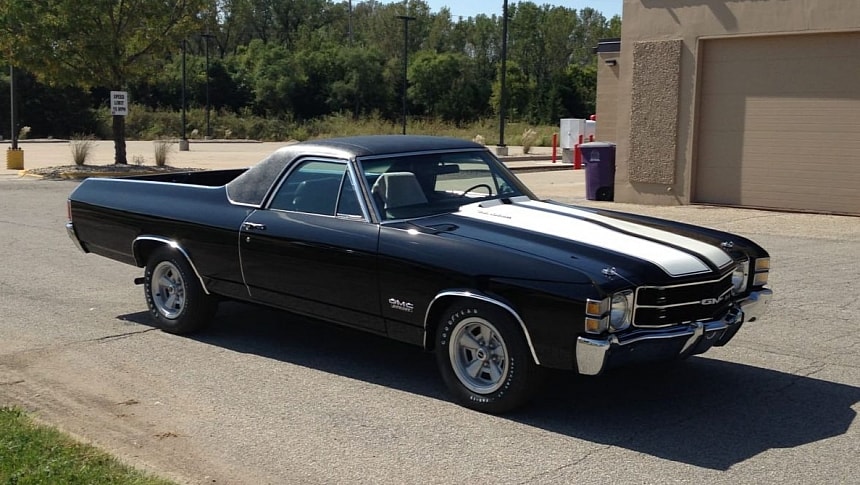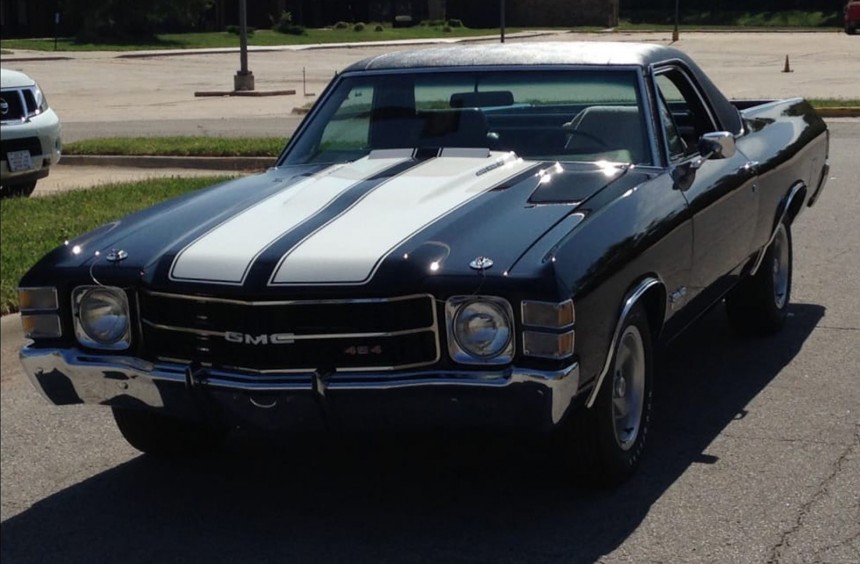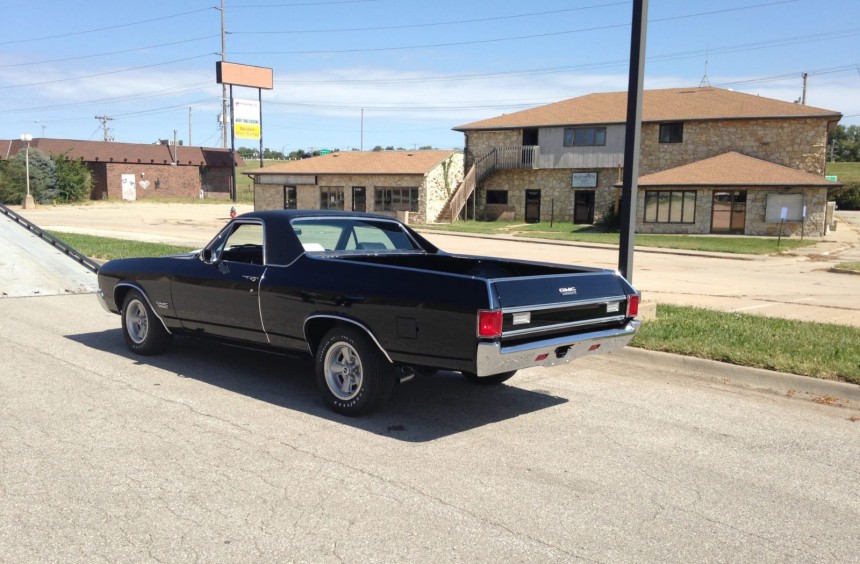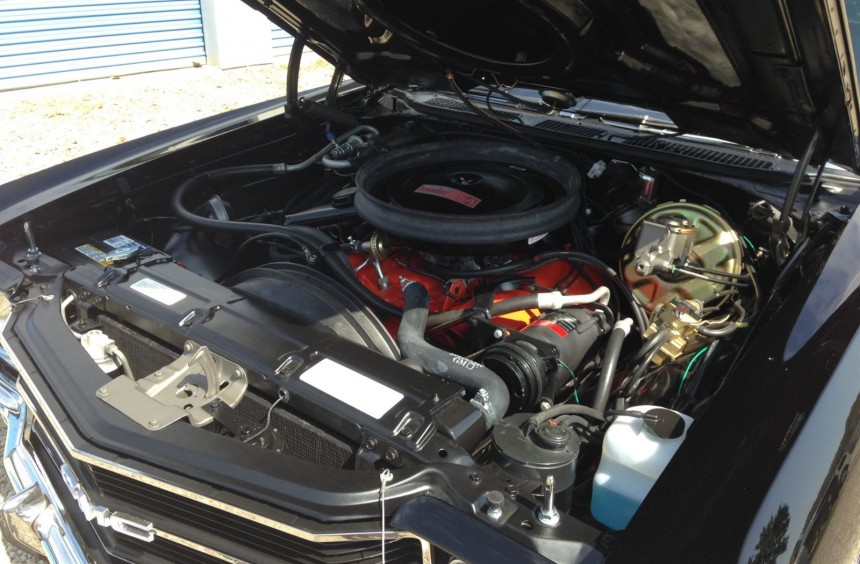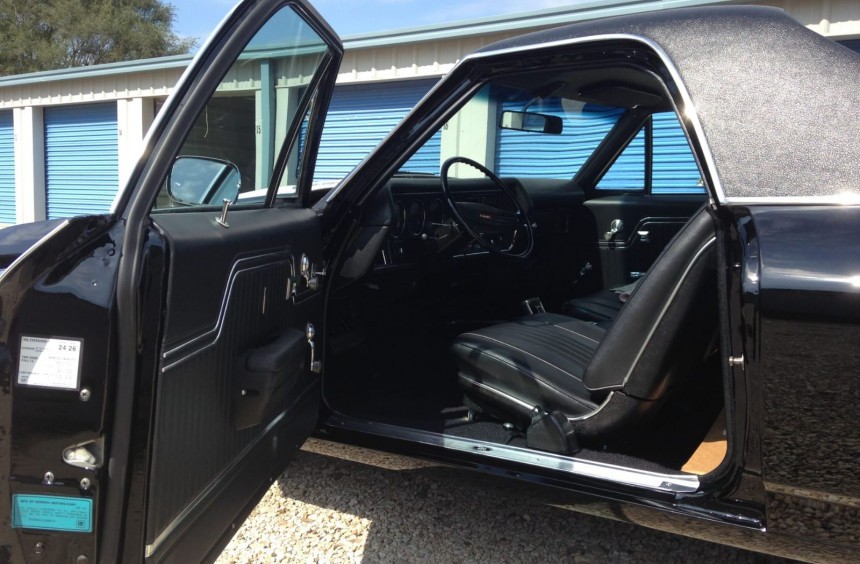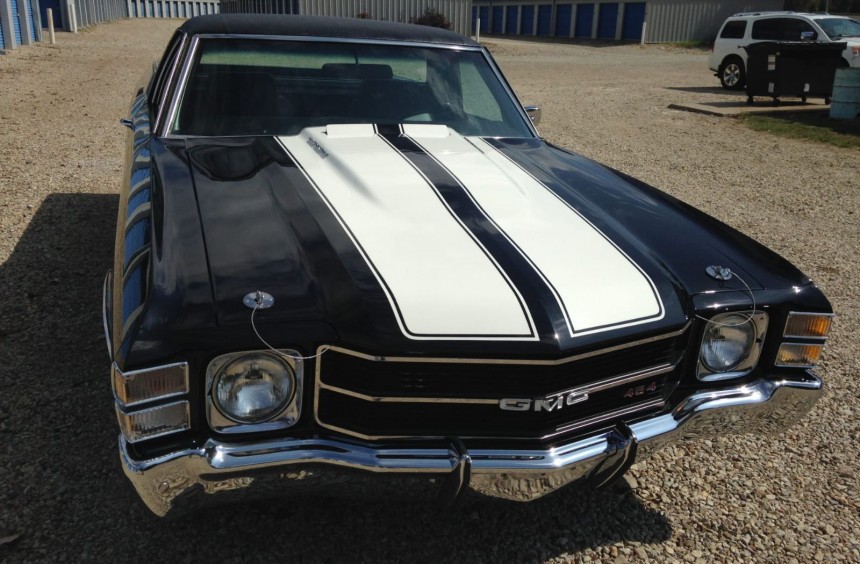In 1971, GMC decided to enter the coupe utility market where the Chevy El Camino and Ford Ranchero reigned supreme. It did so by borrowing its siblings' popular model, and with the rebadged El Camino came the high-performance SS version, rebranded as SP.
Made popular in Australia, where it received the coupe utility (ute, for short) moniker, the passenger car-based light-duty pickup truck started becoming a thing in the US during the late 1950s.
Ford, which also developed the first coupe utility Down Under, was the first to offer a modern one on home turf when the Curier-based Ranchero joined the new-for-1957 full-size lineup.
Two years later, Chevy chopped up a Brookwood wagon and gave birth to the El Camino, which became the Ranchero's arch rival.
For over a decade, both utes went through a series of redesigns, ending up slotted into the intermediate class in 1970.
During that epic model year, when the muscle car era reached its peak, both the Ranchero and El Camino were available in high-performance trims with powerful big-block V8s under their hoods.
In the meantime, the GMC division was busy developing medium- and heavy-duty trucks, busses, and vans.
Consequently, the division had no part in the horsepower war that produced some of the finest muscle cars in history.
However, that changed more or less inadvertently in 1971 when GMC surprised everyone by introducing its first-ever utility coupe, the Sprint.
A rebadged El Camino, the Sprint came with all the engines and trims of its Chevy sibling, including the high-performance SS (Super Sport) muscle ute, which was rebranded SP (Sport Performance).
Thus, GMC joined the muscle car war close to its conclusion and unleashed one of the era's strangest tire shredders.
The 1971 Sprint SP was strange because, unlike other similar GM A-bodies, such as the Chevy Chevelle SS, Pontiac GTO, or Olds 4-4-2, it didn't receive any distinct design cues.
More specifically, the Sprint SP was identical to the third-generation El Camino SS. From the front bumper to the cowl, it shared everything with the Chevelle, whereas the truck bed and rear fascia were all El Camino.
The only features that made it a GMC were the badges located on the front grille, fenders, and tailgate.
A year prior to the introduction of the Sprint, the El Camino, in SS guise, became the most insane coupe utility ever built.
With GM lifting its self-imposed ban on V8s larger than 400 ci (6.55 liters), the 1970 Chevelle SS and, consequently, the El Camino SS were available with two iconic 454-ci (7.4-liter) big blocks: the 360-hp LS5 and the 450-hp, HEMI-slaying LS6.
Like the 1971 El Camino SS, the Sprint SP standard V8 was the 402-ci (6.6-liter) big block marketed under the popular 396 badge, which now made at 300 hp SAE gross or 260 hp, according to the new SAE net ratings.
However, the 454 returned for 1971, albeit with a lower compression ratio meant to decrease emissions and allow it to gobble up unleaded gas.
In its most potent guise, the Sprint SP was powered by the optional LS5 454 mated to a three-speed Turbo Hydra-Matic 400.
While the compression ratio dropped from 10.25:1 to 8.5:1, the gargantuan V8 still made a healthy 365 hp gross (285 hp net), as opposed to the 390 hp of 1970.
The mighty LS6 was also scheduled to return and was present in both the El Camino and the Sprint sales literature, but in the end, GM couldn't make the engine emission-compliant, so no factory-built A-body received one that year.
Like its coupe utility sibling, the Sprint SP didn't feature the heavy-duty suspension package that came standard in the Chevelle SS.
While it did receive stiffer springs and shocks borrowed from the A-body wagons, the SP was missing the crutial rear anti-roll bar that came with SS-badged coupes and convertibles, which made it a lot harder to tame, especially in wet conditions.
However, on a bright, sunny day, only a few other 1971 muscle cars could keep up with GMC's ute in a straight line, especially when it hid an LS5 under the hood.
With the range-topping engine roaring, the Sprint SP could accelerate to 60 mph (97 kph) from a standstill in 6.5 seconds. Even more impressive, it could run the quarter mile in 14.7 seconds at 97 mph (156 kph).
During the 1971 model year, GMC produced 6,473 Sprints, which complimented nicely the 41,606 El Caminos that Chevy sold.
However, with the rope tightening around everything muscle, the SS and SP high-performance utes weren't all that popular, so only 249 performance enthusiasts brought an SP-equipped Sprint that year.
Of those, a mere 25 were equipped with the LS5 454, making surviving examples some of the rarest muscle cars of the era.
According to some estimates, around 16 are still around, and the last pristine example that went under the hammer in recent years was the car featured in this article, which fetched $52,000 at the Mecum Glendale auction in 2020.
Even though it was an El Camino SS clone, the GMC Sprint SP remains a fascinating example of a high-powered coupe utility from the golden age of muscle cars.
While we were unable to find footage of an original Sprint SP454, you can take a virtual tour of a very accurate and absolutely gorgeous replica in the YouTube video below by Darrin Brown.
Ford, which also developed the first coupe utility Down Under, was the first to offer a modern one on home turf when the Curier-based Ranchero joined the new-for-1957 full-size lineup.
Two years later, Chevy chopped up a Brookwood wagon and gave birth to the El Camino, which became the Ranchero's arch rival.
For over a decade, both utes went through a series of redesigns, ending up slotted into the intermediate class in 1970.
During that epic model year, when the muscle car era reached its peak, both the Ranchero and El Camino were available in high-performance trims with powerful big-block V8s under their hoods.
GMC joined the muscle car war more or less inadvertently
Consequently, the division had no part in the horsepower war that produced some of the finest muscle cars in history.
However, that changed more or less inadvertently in 1971 when GMC surprised everyone by introducing its first-ever utility coupe, the Sprint.
A rebadged El Camino, the Sprint came with all the engines and trims of its Chevy sibling, including the high-performance SS (Super Sport) muscle ute, which was rebranded SP (Sport Performance).
Thus, GMC joined the muscle car war close to its conclusion and unleashed one of the era's strangest tire shredders.
Virtually identical to the El Camino SS
More specifically, the Sprint SP was identical to the third-generation El Camino SS. From the front bumper to the cowl, it shared everything with the Chevelle, whereas the truck bed and rear fascia were all El Camino.
The only features that made it a GMC were the badges located on the front grille, fenders, and tailgate.
Less powerful engines, but still packing plenty of muscle
With GM lifting its self-imposed ban on V8s larger than 400 ci (6.55 liters), the 1970 Chevelle SS and, consequently, the El Camino SS were available with two iconic 454-ci (7.4-liter) big blocks: the 360-hp LS5 and the 450-hp, HEMI-slaying LS6.
Like the 1971 El Camino SS, the Sprint SP standard V8 was the 402-ci (6.6-liter) big block marketed under the popular 396 badge, which now made at 300 hp SAE gross or 260 hp, according to the new SAE net ratings.
However, the 454 returned for 1971, albeit with a lower compression ratio meant to decrease emissions and allow it to gobble up unleaded gas.
In its most potent guise, the Sprint SP was powered by the optional LS5 454 mated to a three-speed Turbo Hydra-Matic 400.
While the compression ratio dropped from 10.25:1 to 8.5:1, the gargantuan V8 still made a healthy 365 hp gross (285 hp net), as opposed to the 390 hp of 1970.
The mighty LS6 was also scheduled to return and was present in both the El Camino and the Sprint sales literature, but in the end, GM couldn't make the engine emission-compliant, so no factory-built A-body received one that year.
A practical yet dangerous street weapon
While it did receive stiffer springs and shocks borrowed from the A-body wagons, the SP was missing the crutial rear anti-roll bar that came with SS-badged coupes and convertibles, which made it a lot harder to tame, especially in wet conditions.
However, on a bright, sunny day, only a few other 1971 muscle cars could keep up with GMC's ute in a straight line, especially when it hid an LS5 under the hood.
With the range-topping engine roaring, the Sprint SP could accelerate to 60 mph (97 kph) from a standstill in 6.5 seconds. Even more impressive, it could run the quarter mile in 14.7 seconds at 97 mph (156 kph).
Extremely rare and all but forgotten today
However, with the rope tightening around everything muscle, the SS and SP high-performance utes weren't all that popular, so only 249 performance enthusiasts brought an SP-equipped Sprint that year.
Of those, a mere 25 were equipped with the LS5 454, making surviving examples some of the rarest muscle cars of the era.
According to some estimates, around 16 are still around, and the last pristine example that went under the hammer in recent years was the car featured in this article, which fetched $52,000 at the Mecum Glendale auction in 2020.
Even though it was an El Camino SS clone, the GMC Sprint SP remains a fascinating example of a high-powered coupe utility from the golden age of muscle cars.
While we were unable to find footage of an original Sprint SP454, you can take a virtual tour of a very accurate and absolutely gorgeous replica in the YouTube video below by Darrin Brown.
